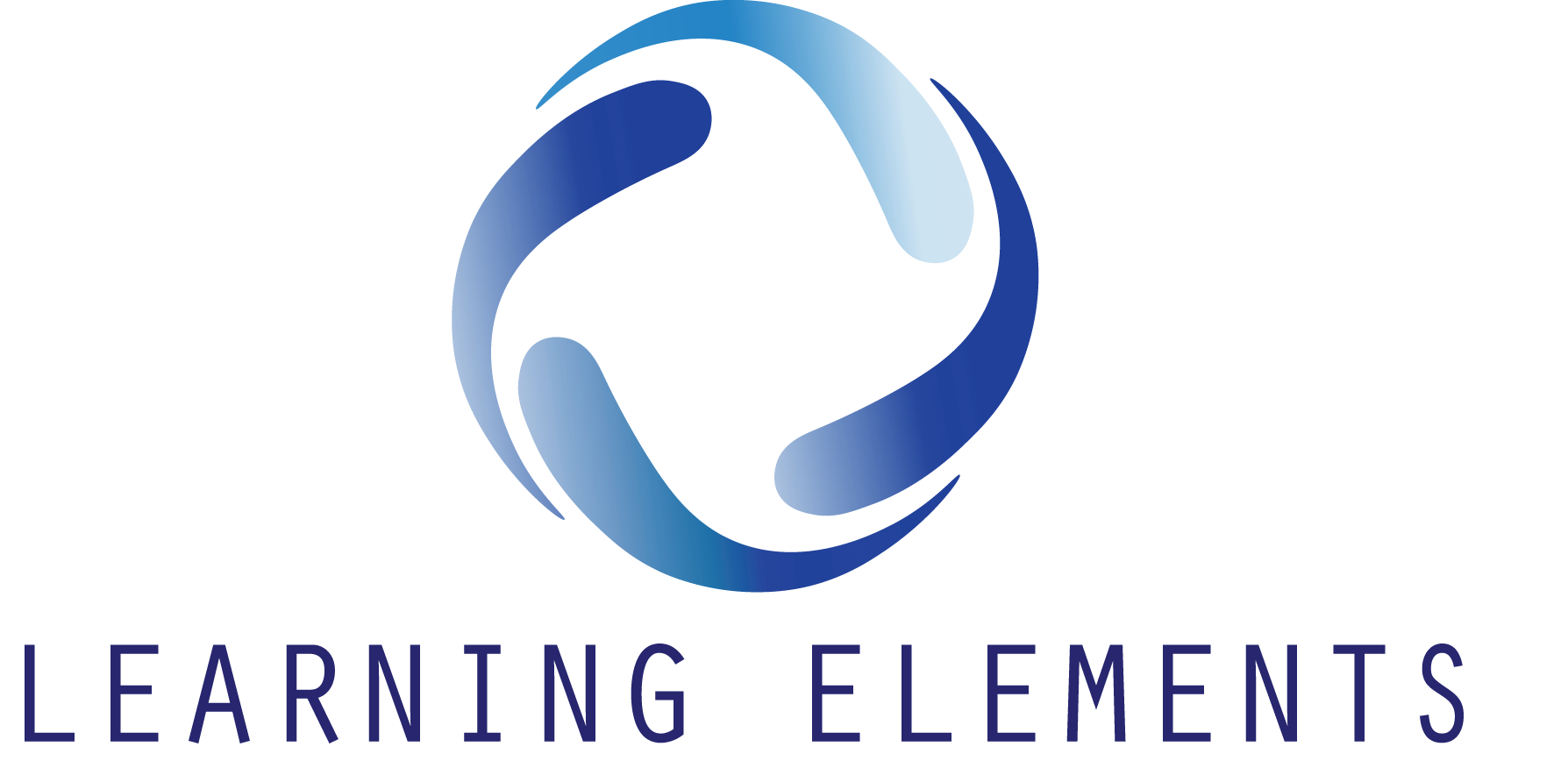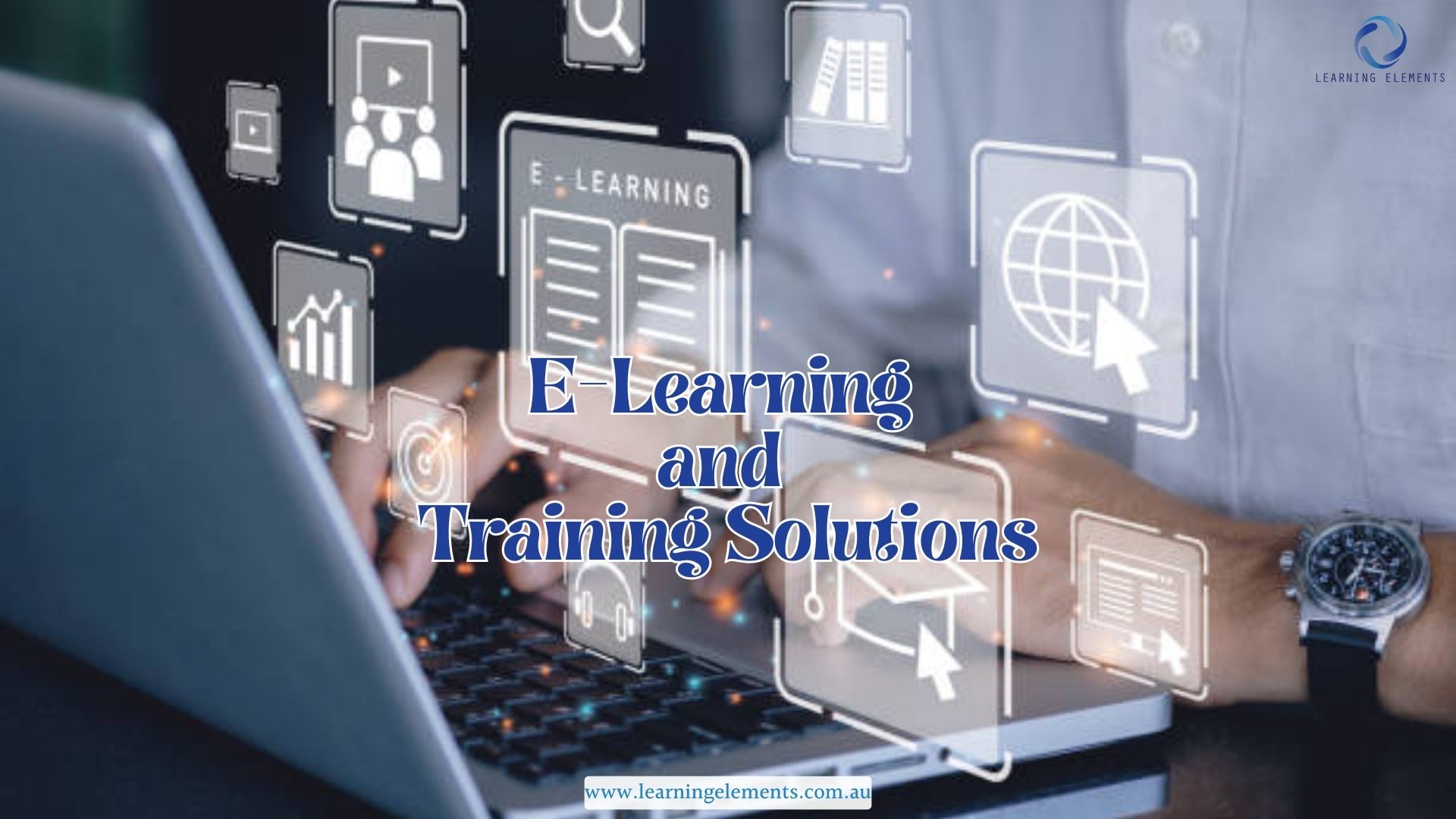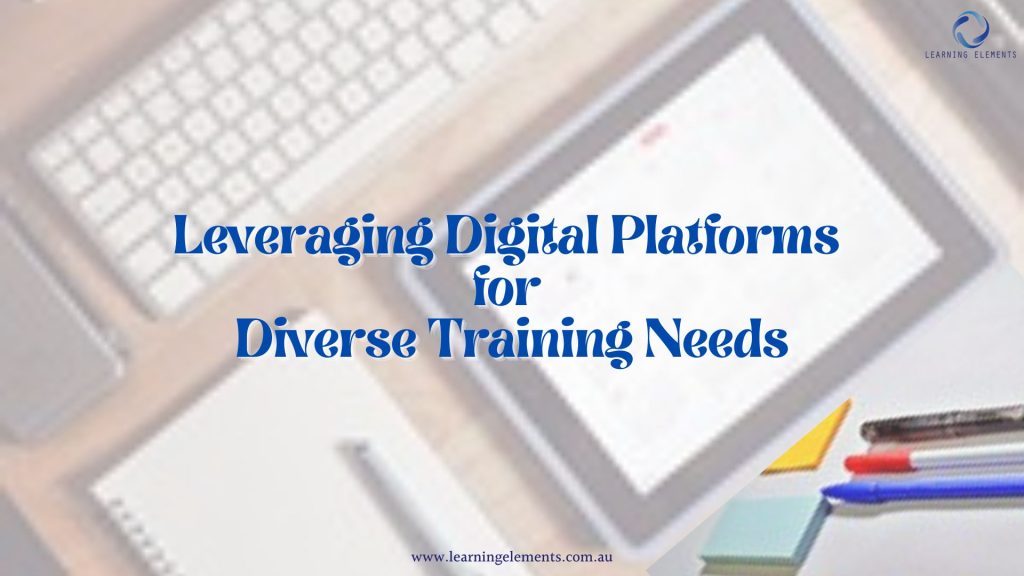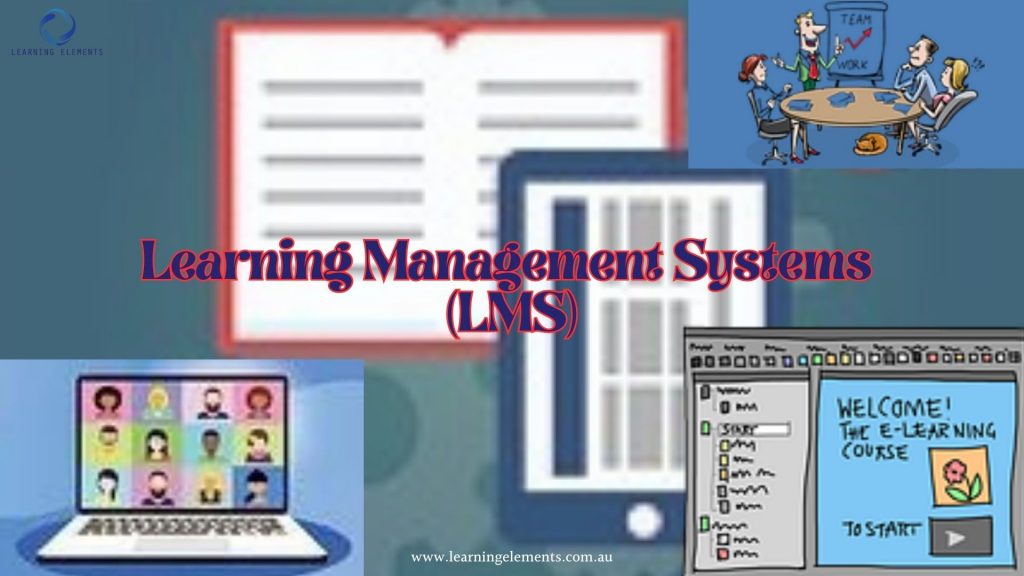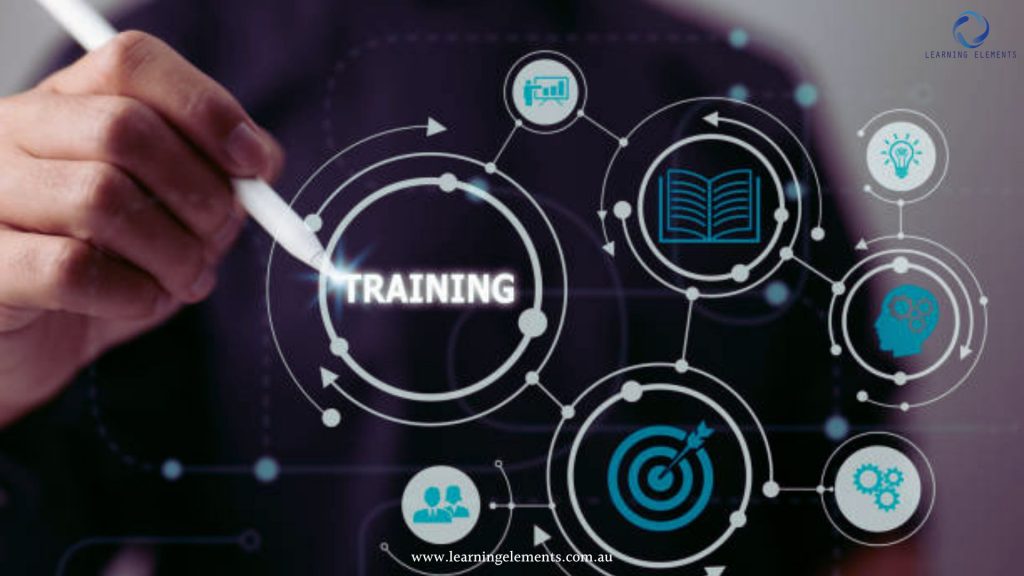E-Learning in Today’s Digital-First World
E-learning (sometimes called web-based training or online learning) is a powerful tool that can be used to create customised learning experiences. Organisations of all sizes are leveraging digital learning solutions to quickly equip employees with the skills they need to succeed in a constantly changing world. With interactive video courses and virtual classrooms, organisations can access greater flexibility when creating their workers’ customised training programs that meet their unique development goals. This article explores the various aspects of e-learning and its impact on training and development.
Transforming Training and Development with E-Learning
Digital learning technology is revolutionising the way companies train and develop their employees. Training and other learning content strategies and solutions enable leaders to quickly equip personnel with the skills they need to succeed in a rapidly evolving workplace.
Key aspects:
E-learning breaks down geographical barriers and time constraints. This makes training and development more accessible to employees across different locations and time zones. This allows companies to provide consistent and standardised training experiences to their workforce, regardless of their physical location.
E-learning significantly reduces training costs associated with travel, venue rentals, printed materials, and instructor fees. With digital learning solutions, organisations can deliver training remotely, eliminating the need for in-person sessions and reducing expenses.
E-learning empowers employees to take control of their learning journey by providing self-paced modules and resources. Individuals can learn at their own pace, allowing for a personalised and flexible approach to skill development.
E-learning promotes a culture of continuous learning within organisations. Through online courses, webinars, and microlearning resources, employees can continuously update their skills and stay ahead in their respective fields.
E-learning ensures consistent delivery of training content, eliminating variations that may arise from instructor-led sessions. Standardised training materials and assessments ensure that employees receive uniform information and knowledge across the organisation.
E-learning enables on-demand learning, allowing employees to access training materials whenever they need them. Employees can quickly find the information they need, whether it’s reviewing a specific topic or seeking clarification on a concept. This promotes efficiency and productivity within the organisation.
Leveraging Digital Platforms for Diverse Training Needs
Organisations leverage digital platforms and learning methods to quickly and effectively develop their workforce. This includes diverse training programs covering corporate training, soft skills development, diversity and inclusion, change management, to customer service training. E-learning provides a versatile approach to cater to diverse training needs.
Here are a few examples of leveraging digital platforms for diverse training needs:
- Corporate Training: E-learning provides an effective solution for corporate training programs, enabling organisations to deliver training on topics such as leadership development, compliance training, onboarding, and technical skill enhancement. Digital platforms offer interactive modules, assessments, and progress tracking for a comprehensive learning experience.
- Soft Skills Development: E-learning platforms offer a wide range of courses to develop essential soft skills such as communication, teamwork, problem-solving, and time management. Employees can access engaging content, interactive simulations, and real-life scenarios to hone their interpersonal and professional skills.
- Diversity and Inclusion Training: E-learning plays a crucial role in promoting diversity and inclusion within organisations. Through interactive modules, videos, and case studies, employees can learn about unconscious bias, cultural competence, inclusive leadership, and creating an inclusive work environment.
- Change Management Training: E-learning platforms help organisations prepare employees for change by offering change management training programs. Employees can learn about change models, strategies for managing resistance, and techniques to adapt to new processes or technologies.
- Customer Service Training: Digital platforms offer immersive customer service training experiences, allowing employees to develop essential skills in handling customer interactions, resolving complaints, and providing exceptional service. Interactive simulations and scenario-based training enhance their ability to deliver exceptional customer experiences.
The Role of Learning Management Systems (LMS)
Learning management systems are digital platforms that efficiently manage the delivery, assessment, and tracking of training programs. Organisations can leverage LMS solutions to curate content, automate assessments, track progress, and manage certifications. This ensures employees have access to relevant and up-to-date resources.
1. Content Curation for Targeted Learning Objectives
E-learning platforms offer powerful content curation capabilities that help organisations create targeted and engaging learning experiences. By leveraging learning management systems (LMS), companies can curate content specifically tailored to their learning objectives. This involves utilising existing resources and developing custom materials like videos, infographics, and presentations. With e-learning, personnel have access to the most relevant and up-to-date resources, ensuring that their learning journeys are effective and aligned with their development goals. Learning management systems further enhance this process by enabling organisations to efficiently curate and organise training content. They can select relevant courses, customise materials, and seamlessly integrate external resources to create comprehensive and engaging learning experiences. With the combination of content curation and the capabilities of learning management systems, organisations can deliver impactful training programs. These programs are targeted and tailored to meet the specific needs of their workforce.
2. Automated Assessments for Effective Learning
Learning management systems (LMS) are powerful tools that enable organisations to streamline the evaluation process and enhance employee learning outcomes. With LMS platforms, automated assessments and quizzes can be effortlessly integrated, allowing organisations to track progress, certify course completion, and ensure employees can effectively apply their knowledge and skills in the workplace. Online quizzes, tests, and interactive assessments provide employees with the opportunity to test their understanding and receive immediate feedback, saving valuable time and resources. By leveraging LMS platforms’ automated assessment features, organisations can create a more engaging, efficient, and effective learning experience for their workforce.
3. Progress Tracking for Continuous Improvement
Learning management systems (LMS) provide organisations with a powerful tool to track and monitor their employees’ progress throughout their learning journey. By leveraging LMS platforms, leaders and managers can gain valuable insights into individual and team performance, identify areas for improvement, and deliver targeted support and guidance. This level of tracking and monitoring facilitates a personalised and effective training experience, allowing leaders to provide timely feedback and interventions that enhance employee development. With the ability to track progress and identify specific areas for growth, organisations can ensure that their employees receive the necessary support and resources to excel in their learning endeavours.
4. Certification Management for Recognition and Growth
Learning management systems (LMS) provide organisations with a streamlined approach to certification management for their personnel. These systems enable companies to issue digital certificates and diplomas efficiently, certifying the successful completion of courses or programs. By automating the certification process, LMS platforms ensure accurate and timely recognition of employees’ achievements. This prompt recognition not only rewards employees for meeting training objectives but also serves as tangible proof of education for their future career prospects. The seamless certification management offered by LMS platforms enhances employees’ career prospects, boosts their motivation, and supports their ongoing professional development.
5. Reporting and Analytics
Learning management systems generate valuable data and analytics on employee learning activities, course completion rates, and performance metrics. Organisations can leverage this data to assess the effectiveness of training programs, identify knowledge gaps, and make data-driven decisions for continuous improvement.
6. Scalability and Flexibility
LMS platforms offer scalability, allowing organisations to easily accommodate a growing number of learners and training programs. They also provide flexibility in terms of accessing learning materials on various devices, enabling employees to learn at their convenience.
Blended Learning: Combining the Best of Both Worlds
Blended learning combines the strengths of traditional instruction and digital resources to create a comprehensive learning experience. The blended e-learning strategy solutions enable companies to access the right content for their employees more quickly and effectively.
Benefits:
- Flexibility: Blended learning provides flexibility in terms of time, location, and pace of learning. Employees can access digital resources anytime, anywhere, while still benefiting from face-to-face interactions and guidance.
- Personalisation: With blended learning, organisations can tailor learning experiences to individual needs. Traditional instruction allows for personalised feedback and guidance, while digital resources provide self-paced learning opportunities.
- Cost-effectiveness: Blended learning optimises training costs by reducing the need for extensive travel, physical materials, and instructor-led sessions. Digital resources can be easily updated and distributed to a large audience.
Storyboards: Enhancing Learning Design in Blended Learning
Storyboards play a crucial role in designing effective blended learning experiences. They serve as a visual representation of the instructional flow, content sequencing, and interactions within the training program. By using storyboards, organisations can ensure a seamless integration of traditional instruction and digital materials. Here’s how storyboards enhance learning design in blended learning:
- Structuring Content and Activities: Storyboards provide a framework for organising content and activities in a logical sequence. They help instructional designers determine how traditional and digital components can complement each other to create a cohesive learning journey.
- Visualising User Experience: Storyboards enable visualising the user experience and interactions in the blended learning program. Designers can map out the user interface, navigation, and interactions to ensure a user-friendly and engaging learning environment.
- Integrating Media Elements: Storyboards facilitate the integration of various media elements, such as videos, interactive quizzes, simulations, and discussions. Designers can identify where and how these elements can enhance the learning experience and reinforce key concepts.
- Balancing Interactions: Blended learning aims to strike a balance between face-to-face interactions and digital engagement. Storyboards help instructional designers allocate appropriate interactions at different stages of the learning journey, ensuring a seamless blend of instructor-led activities and self-paced online modules.
Microlearning: Quick and Effective Knowledge Transfer
Microlearning has gained popularity as a quick and effective method for knowledge transfer. By utilising short and engaging video and audio-based course content, organisations can deliver educational messages in a concise and impactful manner. This approach allows for personalised learning experiences, enabling employees to retain knowledge and practical skills efficiently.
Gamification: Engaging and Motivating Learning Experiences
Gamification adds an element of engagement and motivation to learning experiences. By incorporating video game components such as digital badges, leaderboards, and scorecards into training programs, organisations create interactive and competitive environments. This gamified approach captivates employees, encouraging active participation and enhancing their learning outcomes.
Enabling Digital Transformation through E-Learning
Digital transformation is not just a buzzword; it is a crucial factor for an organisation’s success in today’s fast-paced, technology-driven world. To thrive in this digital landscape, organisations must equip their personnel with the necessary skills, and that’s where e-learning solutions come into play. E-learning plays a vital role in supporting the transition to digital transformation by offering online courses and tailored training programs. These programs enable employees to develop the competencies needed to excel in a digital-first environment. By embracing e-learning, organisations can ensure that their workforce is well-prepared to navigate the challenges and opportunities of the digital age, ultimately driving their success in the ever-evolving business landscape.
Conclusion
E-learning and training solutions are revolutionising how companies equip their personnel with the skills they need to succeed in a constantly changing world. With digital learning technology, organisations can access more effective tools to create customised training and learning strategies tailored to their unique development goals. From interactive courses, virtual classrooms, learning management systems, blended learning solutions, microlearning tools, and gamified experiences, organisations are leveraging these digital platforms to quickly equip their personnel with the information and competency they need to succeed in today’s digital-first environment. Embracing e-learning enables companies to stay competitive and agile, and they can leverage its capabilities to enable digital transformation successfully. The availability of digital resources, continuous learning opportunities, and flexibility of e-learning platforms contribute to building a digitally proficient workforce that can drive innovation and adapt to the changing landscape.
Empower your workforce with the tools they need to thrive in a digital-first world. Explore our E-learning Solutions or contact us for a tailored consultation to design training strategies that drive innovation and success in your organisation.
FAQs:
1. Why attend Training Courses?
Training courses provide an effective and efficient way to quickly equip personnel with the skills and expertise they need to succeed in an evolving workplace. By researching and leveraging training and e-learning solutions, organisations can tailor learning experiences that meet their specific needs and objectives.
2. What are training and e-learning solutions?
Training and e-learning solutions are traditional and digital resources that enable organisations to efficiently manage training programs’ delivery, assessment, and tracking. They offer features such as content curation, automated assessments, progress tracking, and certification management.
3. How can organisations leverage training and e-learning solutions?
Organisations can leverage training and e-learning methods to quickly equip their personnel with the skills and knowledge they need to succeed in today’s work environment. These solutions enable customised learning experiences that meet their needs, efficient access to online course content, engagement through gamification, and tailored training programs.
4. What are some of the most popular training and e-learning solutions?
Some popular training and e-learning solutions include blended e-learning content, microlearning, gamification, virtual classrooms, and digital transformation. Each solution provides tools and capabilities to create practical training and learning strategies that keep employees up-to-date on trends and technologies.
5. How does e-learning benefit remote workers?
E-learning offers significant benefits for remote workers. It provides flexibility in terms of accessing training materials and participating in learning activities from anywhere with an internet connection. Remote workers can engage in self-paced learning, access virtual classrooms, and use interactive video courses to acquire the skills they need. E-learning eliminates geographical barriers and time constraints, allowing remote workers to receive consistent and standardised training experiences. This ensures that remote employees stay up-to-date with the latest knowledge and developments, fostering their professional growth and success in their respective roles.
#eLearning
